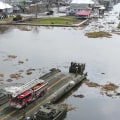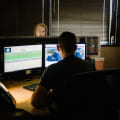The Louisiana Emergency Operations Center (EOC) is equipped with communication, cartography and information collection technology to increase knowledge of the situation and provide information during an emergency. Schools in the state are responsible for the safety and care of students during such situations, such as natural disasters or other potential hazards. The response guided by the National Response Plan (PNR) did not take into account the need to coordinate efforts to protect and restore critical infrastructure in all Emergency Support Functions (ESF). It can also be activated in response to a man-made disaster, a terrorist threat, or other major event or emergency. Trained volunteers from member organizations of the National Voluntary Organizations Active in Disaster (NVOAD), the American Red Cross, the Medical Reserve Corps (MRC) and the Community Emergency Response Team (CERT), as well as untrained volunteers from across the United States, were deployed in Louisiana, Mississippi and Alabama.
Schools must access the six-step school emergency preparedness and management (REMS) process to create plans to continuously build and promote safe and healthy school communities before, during and after potential emergencies. The State Emergency Operations Center (SEOC) can be activated in response to natural disasters, severe weather events, and other emergencies, and serves as a central operations center for emergency response. The Crisis Response Command is comprised of the Emergency Operations Center, the Consolidated Communications Unit at Headquarters and mobile command posts. The Headquarters Consolidated Communications Unit also provides a continuous radio communications gateway to other law enforcement agencies and state agencies in Louisiana using the 700 MHz P25 system known as the Louisiana Wireless Interoperability Network (LWIN). The federal response to Hurricane Katrina demonstrates that the Department of Defense (DOD) has the capacity to play a critical role in the nation's response to catastrophic events.
The Crisis Response Command provides the highest level of operational support to all sections of the Louisiana State Police, as well as to local, state and federal agencies. The Unified Command Group (UCG) provides a unified and coordinated approach to the management of emergency incidents, allowing institutions, government authorities and agencies with different legal, geographical and functional responsibilities to coordinate, plan and interact effectively. The Louisiana State Police has two mobile command posts (MCP) in its fleet that can be quickly deployed in all areas of the state to support the agency's response to critical incidents. Emergency Support Function 6 (ESF), annex to the National Response Plan (NRP), assigns responsibility for the provision of emergency human services to FEMA. Crisis response personnel and the Crisis Incident Management System (CIMS) team can monitor major evacuation routes through the Louisiana Department of Transportation and Development's Intelligent Transportation Systems (ITS) network to provide real-time information during an evacuation.
It is important to recognize that Non-Governmental Organizations (NGOs) play a critical role in response and recovery efforts and will contribute in a way that, in many cases, is more efficient and effective than the federal government's response.






